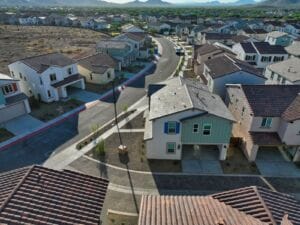The rising material costs, and more specifically, lumber, coupled with the high demand for housing has seen prices of single-family houses skyrocket across the nation. Homebuyers are limited to an ever-smaller inventory of homes, resulting in bidding wars and big sales prices. With limited inventory to choose from, low interest rates and COVID-19 influences, many people are considering building homes on their own land.
READ ALSO: Lumber prices are falling, but when will consumers see savings?
Building a home from the ground up is a highly involved process that has endless advantages when the right approach is taken from the beginning. Buyers who are considering building a home on their own land can mitigate cost increases by focusing on waste reduction, strategic design and performing extensive due diligence on land before making the purchase.
Follow best practices to reduce waste and save money.
Smart builders implement a practice called “precycling,” which is defined as the process of reducing waste by avoiding purchasing items that will generate waste in the first place. Precycling includes:
• Minimizing packaging of products, such as plastic, cardboard and paper to reduce waste that will end up in the landfill
• Ordering materials in bulk instead of individual packages
• Prioritizing returnable containers and packaging if they are available from the manufacturer
Inevitably, builders are going to need to take trips to the landfill. The trips can be reduced and fees eliminated by planning materials ahead of the build and ordering the right amount. Doing so can reduce labor and product costs that are acquired through cutting or altering larger-sized products. This is particularly important for wood since lumber is a significant portion of the material that ends up in landfills.
Builders should also consider selling back any unused material to the supplier or donating unused items to charities, such as Habitat for Humanity’s ReStores, to receive a tax benefit.
Think strategically when designing the home.
Customization is one of the greatest benefits of designing a home. However, most buyers focus on the aesthetics of customization rather than the cost-savings advantages. Thinking about the overall design, smaller homes are not only less expensive to build, but the long-term costs, including energy bills and maintenance, are less expensive.
Homebuyers also want to think about the use of each room and minimize “phantom spaces,” or spaces that are underutilized, including spaces as large as an attic or as small as a cabinet.
Designs should prioritize aspects of the home that are going to be difficult or expensive to change, such as designated rooms or the home’s exterior. DIY projects or small adjustments can be accounted for in a later budget.
Perform due diligence before purchasing land.
Just as important as the aesthetics of a plot of land, due diligence provides homebuyers with information that might present limitations. Due diligence can include information about how the land is zoned, whether or not there are utility hookups, deed restrictions and more items that are going to impact the budget.
One of the most important steps homebuyers can take, a land survey, is a small investment that provides a wealth of valuable information that will help protect from a much larger future investment.
Kyle Bradstreet serves as vice president of supply chain at Adair Homes, a premier on-your-lot builder that specializes in high-quality, custom homes in Oregon, Washington, Idaho, Arizona, and coming soon to Utah. Bradstreet has spent 18 years in the homebuilding industry, including almost 8 years with Adair.




